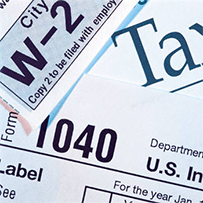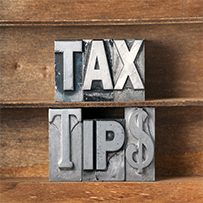
Tax Documents Due Date
By law, employers have until January 31st (or the next business day if it’s a weekend or holiday) to send you their annual tax statements such as W2s, 1099-INT etc.
Many taxpayers have opted to receive their documents electronically, so check your email for notifications that the statements are available or just check your online account for the documents.
Below are some statements you may receive from your employer(s), banks, stockbrokers and other institutions or agencies that were involved in your finances for the past year.
Tax Documents
Health Care Statements
Per the Affordable Care Act (aka Obamacare) there are three health insurance 1095 statements that you can receive depending on how you carried health insurance.
- Form 1095-A – If you, your spouse or a dependent enrolled in health insurance through a state or federal exchange, also referred to as the Marketplace, you should receive Form 1095-A, Health Insurance Marketplace Statement. The information on this new form is needed to complete Form 8962 and calculate your correct premium tax credit amount.Only individuals who bought medical insurance through the marketplace will receive this form. If you do not get your Form 1095-A, check your online Marketplace account or contact the marketplace from which you purchased your coverage.
- Form 1095-B – This form is sent by your health care insurer and/or your employer if the company has fewer than 50 full-time employees. It confirms that you, your spouse (if you file a joint return) and your dependents had at least minimum qualifying health insurance coverage for some or all months of the prior tax year. Form 1095-B Individuals who don’t have minimum essential coverage may have to make an individual shared responsibility payment.
- Form 1095-C – This form is the version used by large employers to notify employees that they, their spouses (if filing jointly) and dependents had minimum essential coverage for all or part of the prior tax year. This verification will help taxpayers avoid the penalty for not having coverage, known as the shared responsibility payment.
Income Statements
- W-2 – Your W-2 shows how much money you made, how much income tax was withheld, Social Security and Medicare taxes paid, and any benefit contributions; retirement plans, medical accounts and child care reimbursement plans. You need one from each employer you worked for in the past year.
- W-2G – This form reports gambling winnings and any federal income tax withheld on those winnings
- 1099-INT – If you earned more than $10 in interest on a bank account or a certificate of deposit, you’ll get one of these forms for each account. Don’t dismiss this statement if you reinvested the interest. Tax law says you received the income even if you didn’t actually have it in your hand, and reinvested earnings are still taxable income. 1099-INT statements also are issued to people who cashed in savings bonds.
- 1099-DIV – Earnings from individual stocks and mutual funds are reported on Form 1099-DIV. This will show dividends and capital gains distributed over $10.
- 1099-B – If you sold stocks, bonds or mutual funds, you will receive a 1099-B from your broker or mutual fund company. This will tell you the number of shares sold, when they sold and the amount you got for the sale. You’ll need this information, along with the date you bought the shares and the amount you paid for them, to figure your taxes.
- 1099-C -This form is used by debtors to report debt they cancelled for you over $600.
- 1099-G – Taxpayers who got a refund of state or local taxes last year will get this form. If you used those taxes as an itemized deduction (Schedule A taxes) on your previous year’s federal income tax return, you’ll need to report the 1099-G amount on this year’s return. Unemployment and taxable grants are report on this form as well.
- 1099-K – If you received payments via credit or debit cards or from third-party payment processors, such as PayPal, Amazon and eBay, you might receive a 1099-K reporting those amounts. There are triggers for amounts ($20,000) and number of transactions (200), so not every person who receives such payments will get a 1099-K. This income, however, is taxable and should be reported even without issuance of a 1099-K.
- 1099-R – If you received a pension or a distribution from an individual retirement account or retirement plan, the 1099-R provides the details of these transactions. The form is issued by your broker, pension plan manager or mutual fund company. You’ll also get a 1099-R if you rolled over money in a retirement plan, usually a 401(k) to an IRA, or if you converted a traditional IRA to a Roth IRA. A rollover usually is not a taxable event, but a pension payout may be.
- 1099-MISC – You will receive this form for many miscellaneous income items. Mainly self-employed and independent contractors who earned $600 or more should receive a 1099-MISC from each company with which they did business. You can receive for prizes, awards, rental income, and more.
- Form 5498 – Any contributions made during the calendar year to any individual retirement accounts (IRAs) are reported on this form. The 5498 shows traditional IRA contributions that might be deductible on your tax return, as well as any rollovers, including a direct rollover to a traditional IRA, made during the last tax year. It also reports amounts recharacterized from one type of IRA to another. It notes any amounts converted from a traditional IRA, simplified employee pension or savings incentive match plan for employees to a Roth IRA.
- Schedule K-1 – If you received money from an estate, trust, partnership or S corporation last year, you should get a Schedule K-1. However, because of the complexity of many of these arrangements, account managers tend to send out K-1s later in the tax season sometimes not until after the April filing deadline.
Deduction Statements
- 1098 – For most homeowners, mortgage interest is tax-deductible, and this document will tell you how much you paid last year. Your lender is required to send you one of these forms if you paid at least $600 interest. In addition to the mortgage interest, The form may have other amounts paid toward PMI, Points or origination fees, real estate taxes, and property insurance (hazard insurance).
- 1098-E – You will receive this form if you’re paying interest on your student loans. Your lender must send you one if the interest tally is at least $600. You may be able to deduct your student loan interest.
- 8889 – This form reports health savings account (HSA) contributions (including those made on your behalf and employer contributions) and distributions you took from the HSA
Credit Statements
- 1098-T – If you’re claiming education credits you’ll need this form to report the Tuition paid. Schools are required to supply the form with the actual amount paid instead of amount billed (by 2018). You can also claim books, supplies, and other education expenses on your return depending on the credit taken.
- Child Care Statements – If your children are under 13 years old, you may be able to deduct their childcare expenses. You should receive a form from the provider with their name, employer ID, phone, address, and amount paid.
- Contribution Statements from 501 (c)(3) Charities – If you made charitable contributions in the past year you may receive a statement from the institution with the amount paid. If not, you should have receipts, check or other documentation for the donation.
Follow us: @the_tax_lady | TACCT on Facebook


